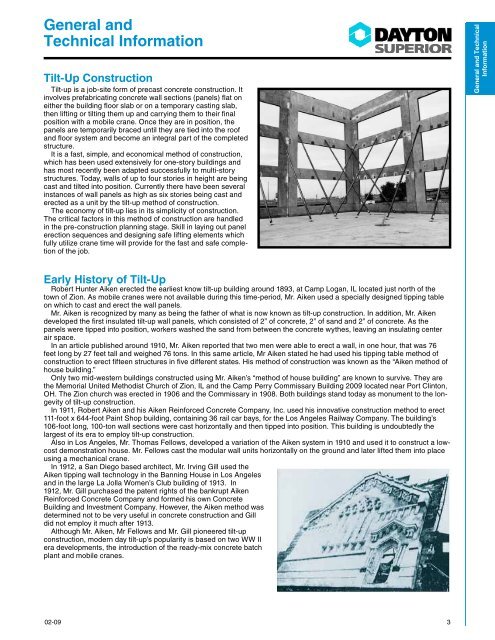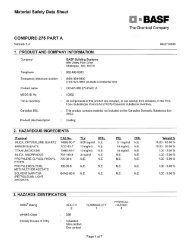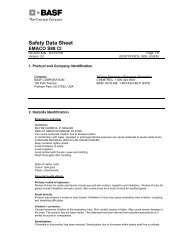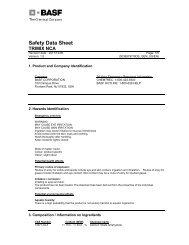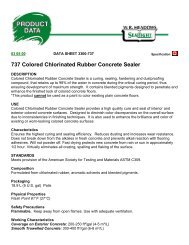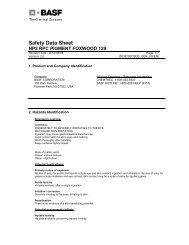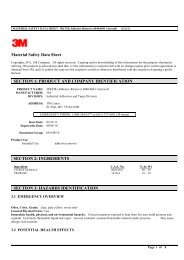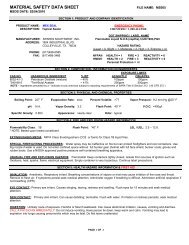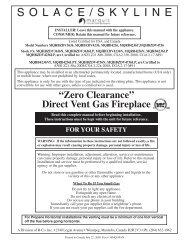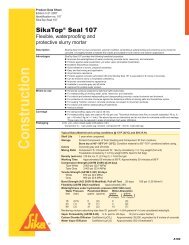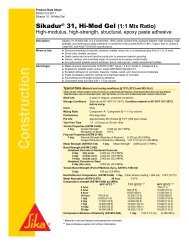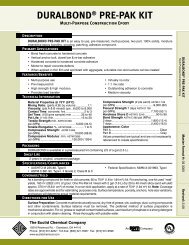You also want an ePaper? Increase the reach of your titles
YUMPU automatically turns print PDFs into web optimized ePapers that Google loves.
General andTechnical InformationTilt-Up ConstructionTilt-up is a job-site form of precast concrete construction. Itinvolves prefabricating concrete wall sections (panels) flat oneither the building floor slab or on a temporary casting slab,then lifting or tilting them up and carrying them to their finalposition with a mobile crane. Once they are in position, thepanels are temporarily braced until they are tied into the roofand floor system and become an integral part of the completedstructure.It is a fast, simple, and economical method of construction,which has been used extensively for one-story buildings andhas most recently been adapted successfully to multi-storystructures. Today, walls of up to four stories in height are beingcast and tilted into position. Currently there have been severalinstances of wall panels as high as six stories being cast anderected as a unit by the tilt-up method of construction.The economy of tilt-up lies in its simplicity of construction.The critical factors in this method of construction are handledin the pre-construction planning stage. Skill in laying out panelerection sequences and designing safe lifting elements whichfully utilize crane time will provide for the fast and safe completionof the job.General and TechnicalInformationEarly History of Tilt-UpRobert Hunter Aiken erected the earliest know tilt-up building around 1893, at Camp Logan, IL located just north of thetown of Zion. As mobile cranes were not available during this time-period, Mr. Aiken used a specially designed tipping tableon which to cast and erect the wall panels.Mr. Aiken is recognized by many as being the father of what is now known as tilt-up construction. In addition, Mr. Aikendeveloped the first insulated tilt-up wall panels, which consisted of 2” of concrete, 2” of sand and 2” of concrete. As thepanels were tipped into position, workers washed the sand from between the concrete wythes, leaving an insulating centerair space.In an article published around 1910, Mr. Aiken reported that two men were able to erect a wall, in one hour, that was 76feet long by 27 feet tall and weighed 76 tons. In this same article, Mr Aiken stated he had used his tipping table method ofconstruction to erect fifteen structures in five different states. His method of construction was known as the “Aiken method ofhouse building.”Only two mid-western buildings constructed using Mr. Aiken’s “method of house building” are known to survive. They arethe Memorial United Methodist Church of Zion, IL and the Camp Perry Commissary Building 2009 located near Port Clinton,OH. The Zion church was erected in 1906 and the Commissary in 1908. Both buildings stand today as monument to the longevityof tilt-up construction.In 1911, Robert Aiken and his Aiken Reinforced Concrete Company, Inc. used his innovative construction method to erect111-foot x 644-foot Paint Shop building, containing 36 rail car bays, for the Los Angeles Railway Company. The building’s106-foot long, 100-ton wall sections were cast horizontally and then tipped into position. This building is undoubtedly thelargest of its era to employ tilt-up construction.Also in Los Angeles, Mr. Thomas Fellows, developed a variation of the Aiken system in 1910 and used it to construct a lowcostdemonstration house. Mr. Fellows cast the modular wall units horizontally on the ground and later lifted them into placeusing a mechanical crane.In 1912, a San Diego based architect, Mr. Irving Gill used theAiken tipping wall technology in the Banning House in Los Angelesand in the large La Jolla Women’s Club building of 1913. In1912, Mr. Gill purchased the patent rights of the bankrupt AikenReinforced Concrete Company and formed his own ConcreteBuilding and Investment Company. However, the Aiken method wasdetermined not to be very useful in concrete construction and Gilldid not employ it much after 1913.Although Mr. Aiken, Mr Fellows and Mr. Gill pioneered tilt-upconstruction, modern day tilt-up’s popularity is based on two WW IIera developments, the introduction of the ready-mix concrete batchplant and mobile cranes.02-093


